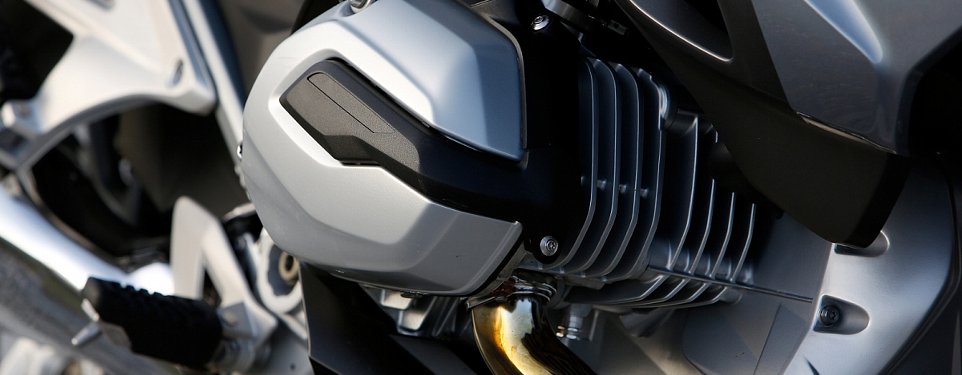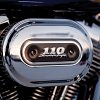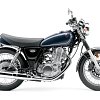I’m an anomaly: a Harleyphile who appreciates liquid cooling, despite the fact that I currently own... uh, zero bikes that have green juice in them.
Irrespective of what I own, I see the writing on the wall. Some Harleys now sport liquid-cooled heads, and the MoCo’s close work with Porsche on the scrapped Nova and successful Revolution projects was not a happy accident. Porsche is a company with a legion of rabid fans who successfully made the transition from air cooling to liquid cooling. Harley-Davidson notwithstanding, the obvious question is why liquid cooling has become the dominant method of keeping bikes at a correct operating temperature.
Nearly all new motorcycle designs are cooled by circulating liquid. Sure, you’ll see some new bikes that are air-cooled, like the Suzuki Boulevard or the Honda Rebel. Those are hold-over designs that debuted in the 1980s. Heck, even the new Yamaha SR400 is old hat! That tooling was bought and paid for a long time ago, so it makes sense for the manufacturers to get as many fruitful years from it as they can. However, any fresh designs you will see are likely going to be liquid-cooled in design. Let’s explore why.

The difference between 'em
Air-cooled engines operate at a wider range of temperatures that are considered “normal.” There’s a big difference in the temperatures of an engine lugging a fully loaded touring machine through snail-pace traffic in August versus the engine that’s hauling around a small rider on a chilly fall afternoon at a leisurely pace. Air-cooled engines typically dissipate their heat through fins seen on the cylinders, and often the head itself.
A liquid-cooled engine has a narrower window of operating temperatures. Once warmed up, it typically runs at a pretty constant temperature. The water pump keeps circulating the coolant into the radiator and back to the engine, and if the bike’s speed slows to the point where cool air is not flowing through the radiator to lower the temperature of the coolant inside it, a thermostat typically turns on an electric fan to draw the air over the radiator.
OK, so why do we need the radiator and the other junk?
Air cooling works well, but it has some shortcomings in terms of environmental impact. Because of the relatively wide range of temperatures considered “normal” for an air-cooled engine, clearances and fit tolerances between parts need to be pretty loose in order to allow for the expansion and contraction of parts. All those spaces can allow oil to seep into the combustion chamber. Burning oil is not so great for the planet.
Because air cooling an engine leaves a bit to be desired in terms of efficacy, intrepid riders and tuners often richen the fuel-air mixture (more fuel, less air) on their bikes, because richer engines run cooler. Again, the problem with this method of cooling is that excess hydrocarbons are released into the air. It’s not good for Mama Nature.
Liquid-cooled engines are typically a bit more forgiving when run lean, simply because the hot engine has more to heat up (the surrounding coolant) before causing damage. As manufacturers face more and more stringent emissions regs, they often simply run the engines lean to help meet the requirements. It's a good strategy — if the engine itself can put up with the heat. This is why many folks rejet their carburetors or throw a fuel management unit on a fuel-injected bike as soon as they get it. The customers knew that the OEMs were not optimizing for horsepower, but rather, they made compromises to meet regs and move bikes out the door legally.

Also, a happy side effect
Well, the final piece of the puzzle, believe it or not, is noise. Legislation is always cropping up to encourage quiet motorcycles. While exhaust noise is what everyone thinks about, it's the overall level that matters. It just so happens that a liquid-cooled engine is a bit quieter than its air-cooled counterpart. Why, you ask? That jacket of water that surrounds the engine deadens mechanical noise. If the engine is quieter, the manufacturer may be able, for example, to use a freer-flowing exhaust, and that can provide more power.
So, what does all this mean?
That most engines will be liquid-cooled going forward! While air-cooled engines will still be around, often for styling reasons, most manufacturers will produce primarily liquid-cooled engines for the U.S. market, because it is easier to meet emissions and noise regulations and increase power output. Much like carburetors, air-cooled engines are probably as good as they'll ever get, because manufacturers will stop improving the technology. And that’s just the way things are.







